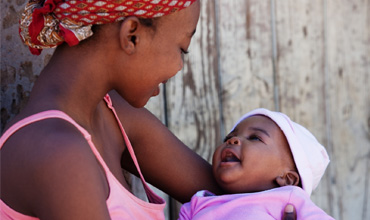Knowledge, Attitude and Practices of Breastfeeding of Mothers in Rural and Urban Settings in the Federal Capital Territory, Nigeria

Abstract:
According
to World Bank (2008), the percentage of children under 6 months that were
exclusively breast fed in Nigeria was reported to be 17.20% in 2004 and 13.10 %
in 2008. This indicates a decline in the practices of exclusive breastfeeding
among mothers in the urban and rural settings in Nigeria. Also, a recent survey
by the Federal Ministry of Health in Nigeria reveals that 13.1% of Nigerian
children under six months are exclusively breastfed.
Hence
the need to assess the knowledge, attitude and practices of breastfeeding among
mothers in Nigeria using the rural and urban settings in the Federal Capital
Territory as a case study.
References:
[1]. Ajibade
B.L., Okunlade J. O., Makinde O.Y., Amoo P.O., Adeyemo M.O.A (2013) Factors
influencing the practice of exclusive breastfeeding in rural communities of
Osun state, Nigeria. European Journal of Business and Management, 5 (15)
[2]. Ajibuah
Bolanle Joel (2013), Appraisal of Nursing Mothers’ Knowledge and Practice
ofExclusive Breastfeeding in Yobe State, Nigeria. Journal of Biology
Agriculture and Healthcare 3 (20)
[3]. Alutu
A.N.G. & Orubu A.O. (2005) Barriers to successful exclusive breastfeeding
practices among rural and urban nursing mothers in Edo state of Nigeria:
Implication for education and counseling. Research review NS 21(2) 27-35
University of Legon, Ghana.
[4]. Awi D.D.,
Alikor E.A.D., (2006) Barriers to timely initiation of breastfeeding among
mothers of healthy full term babies who deliver at the university of Port
Harcourt teaching hospital. Nigerian Journal of Clinical Practice, 9 (1): 57 –
64
[5]. Aloysius N. Maduforo and Romanus O. Onuoha; (2011)
Relativities of exclusive breastfeeding between urban and rural lactating women
in Imo state JORIND 9 (1) ISSN 1596 8308
[6]. Blum LM;
(1999) At the Breast. Ideologies of Breastfeeding and Motherhood in the
Contemporary United States Boston: Beacon Press
[7]. Chidozie E Mbada, Adekemi E
Olowookere, Joel O Faronbi, Folasade C Oyinlola-Aromolaran, Funmilola A Faremi,
Abiola O Ogundele, Taofeek O Awotidebe, Adepeju A Ojo and Oluwakemi A
Augustine; (2013) Knowledge, attitude and techniques of breastfeeding among
Nigerian mothers from a semi-urban community BMC Research Notes 6:552
[8]. Davies, A.A (1997) Socio-cultural
factors and the promotion of exclusive breastfeeding in rural Yoruba
communities of Osun State, Nigeria Social Science and Medicine 45(1):113 125
[9]. Federal Office of Statistics
[Nigeria] and IRD/Macro International Inc.: Nigeria Demographic and Health
Survey 2003. Columbia, Maryland: Federal Office of Statistics and IRD/Macro
International Inc.; 2004.
[10]. Grassley J, Eschiti V; (2008) Grandmother
Breastfeeding supports: What do mothers need and want? Birth 35(4):329-335.
[11].
Gareth J, Richard WS, Robert EB, Zulfiqar AB, and Saul SM; (2003)how many child
deaths can we prevent this year? Lancet, 362(9377):65-71.
[12]. Isaton, J.
S. (1998) Breastfeeding: from Biology to Policy 2nd Abraham Horwitz Annual
Lecture March 1998 United Nations Administrative Committee on Coordination Sub
Committee on Nutrition (ACC/SCN)
[13]. Klein, J.
D. and the Committee on Adolescence (2005); Adolescent Pregnancy: Current
Trends and Issues, Pediatrics 116:pp.281- 286.
[14].
Kingsley E Agho, Michael J Dibley, Justice I Odiase, Sunday M Ogbonmwan; (2011)
Determinants of exclusive breastfeeding in Nigeria BMC Pregnancy and Childbirth
11:2
[15].
Kimani-Murage E.W., Madise N.J., Fotso J.C., Kyobutung C., Mutua M.K., Gitau
T.M., Yatich N. (2011) Patterns and determinants of breastfeeding and
complimentary feeding practices in urban informal settlements, Nairobi Kenya.
BMC Public Health, 11:396
[16].
Lauer J, Betran A, Victora C, de Onis M, and Barros A (2011) Breastfeeding
patterns and exposure to suboptimal breastfeeding among children in developing
countries: review and analysis of nationally representative surveys BMC
Medicine 2(1):26
[17].
Nigeria demographic and health survey (2013). National Population Commission,
Nigeria.
[18]. Oche M.O.,
Umar A.S., Ahmed H., Knowledge and practice of exclusive breastfeeding in
Kware, Nigeria African Health Sciences; 11(3): 518 – 523
[19].
Olayinka Alade, Musibau Ayoade Titiloye, Frederick Olore Oshiname and Oyedunni
Sola Arulogun (2013) Exclusive breastfeeding and related antecedents factors
among lactating mothers in a rural community in south west Nigeria. Academic
Journals; IJNM Vol. 5(7), pp. 132-138
[20]. Ogunlesi
T.A. (2010) Maternal socio-demographic factors influencing the initiation and
exclusivity of breastfeeding in a Nigerian semi-urban setting. Maternal Child
Health J 14(3):459-465.
[21]. Oweis A,
Tayem A, and Froelicher E.S. (2009). Breastfeeding practices among Jordanian
women. Int J Nurs Pract 15:32-40.
[22]. Ojo M.
Agunbiade and Opeyemi V Ogunleye (2012). Constraints to exclusive breastfeeding
practice among breastfeeding mothers in Southwest Nigeria: implications for
scaling up. International Breastfeeding Journal 7:5
[23]. Salami L.
(2006) Factors influencing breastfeeding practices in Edo state, Nigeria.
African Journal of Food Agriculture Nutrition and Development 6(2):1-12.
[24]. Spencer
R.L. (2008). Research methodologies to investigate the experience of
breastfeeding: a discussion paper. Int J Nurs Stud 45(12):1823-1830.
[25]. The
Millennium Development Goals report 2010, United Nations
[26]. UNICEF
global databases, 2014
[27].
World Health Organization: The State of Breastfeeding in 33 Countries.
2010
[http://www.worldbreastfeedingtrends.org/].
[28]. WHO/UNICEF:
Global action plan for prevention and control of pneumonia (GAPP). 2009 Volume
WHO/FCH/CAH/NCH/09.04.
[29]. WHO and
UNICEF (2009) Baby-friendly hospital initiative Revised, Updated and Expanded
for Integrated Care. WHO Document Production Services, Geneva, Switzerland.
[30]. World Bank
report on exclusive breastfeeding (2008). http://www.tradingeconomics.com/nigeria/exclusive-breastfeeding

